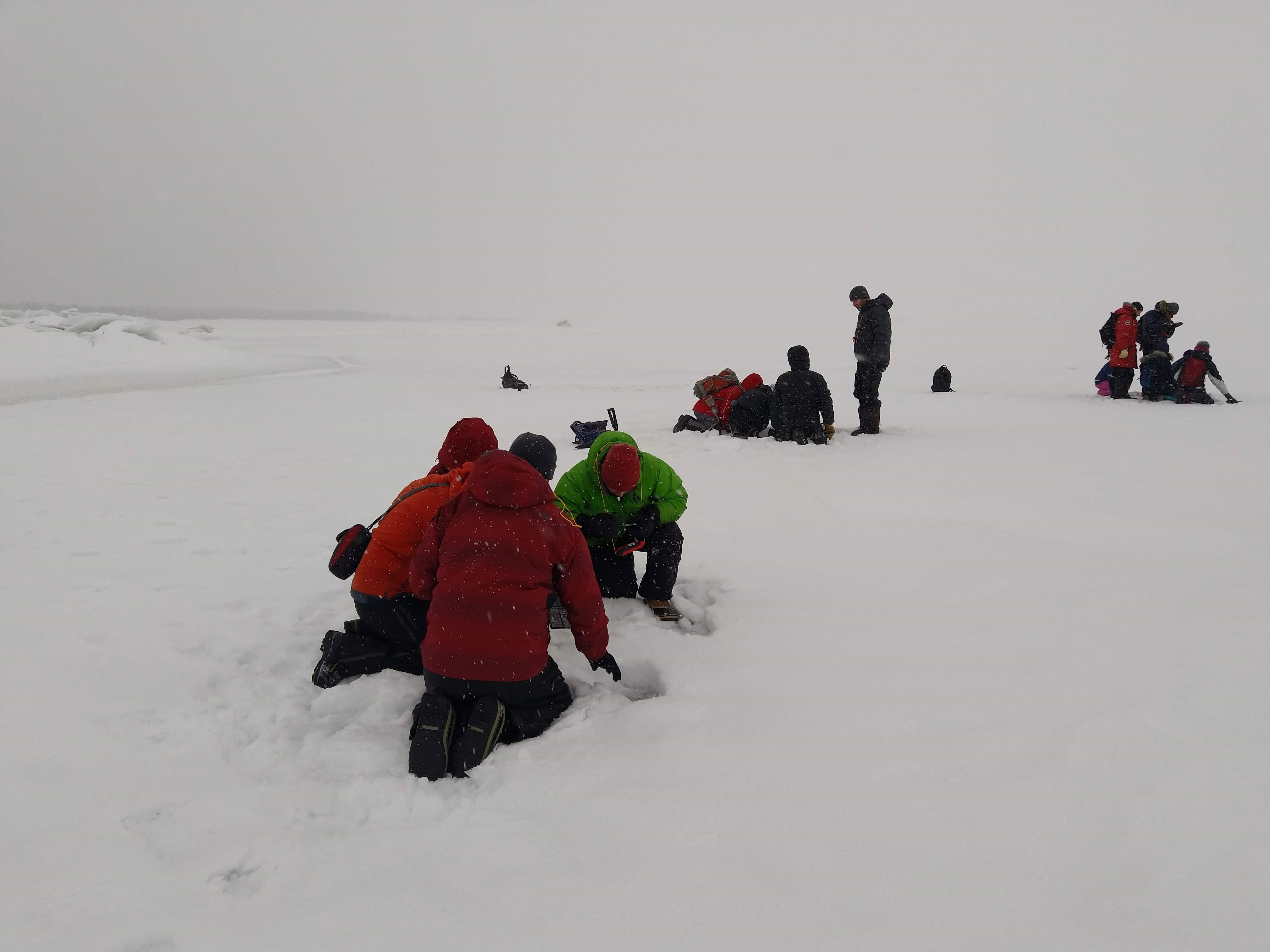 The Snow Science Winter School teaches the use of modern field quantification methods for snow cover in a field work oriented training school. The modern methods require experience and specific know-how to achieve high-quality results, necessitating an activity to provide these means to a new generation of young scientists.
The Snow Science Winter School teaches the use of modern field quantification methods for snow cover in a field work oriented training school. The modern methods require experience and specific know-how to achieve high-quality results, necessitating an activity to provide these means to a new generation of young scientists.
The school offers possibility to get hands-on experience of using instruments in the field with guidance from experienced scientists. The theme of the 5th school was snow on sea ice. Theory-oriented lectures took place in the morning, followed by demonstrations and practical experiments by the graduate and post-graduate students in the field. The island of Hailuoto in the Bay of Bothnia provided a unique opportunity to work on sea ice. The site has been used previously by FMI as well as Universities in Finland for oceanographic and sea ice studies. In conjunction with the Snow School on preceding weeks, a field training session for the MOSAiC campaign was organized with some lecturers and students participating in both events.
Highlights of the activity were:
• 21 students from diverse fields participated in a week-long winter school, learning field techniques for scientific quantification snow properties in a natural environment
• The site in Hailuoto, Finland, made possible to conduct measurements of snow on sea ice
• This is of primary importance concerning the upcoming Multidisciplinary drifting Observatory for the Study of Arctic Climate (MOSAiC) campaign (www.mosaic-expedition.com). Many of the school’s students and lecturers will participate in the campaign.
Next Snow Science Winter School will be held in Col du Lautaret (France) on 16-22 February 2020, please find more information on SLF website. Applications will close on October 20, 2019.
